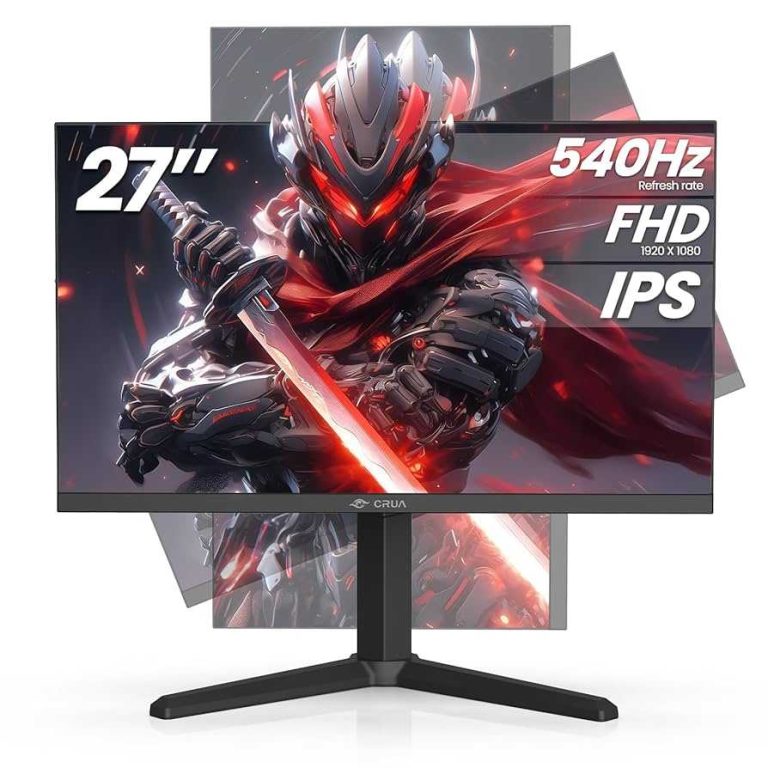The ASUS ZenScreen MB16AC is widely regarded as the best portable monitor for laptops, offering a perfect blend of portability, quality, and ease of use. It’s lightweight, easy to set up, and delivers crisp visuals, making it ideal for professionals on the go or anyone needing extra screen space.
In short, the best portable monitor for a laptop combines portability, good display quality, and compatibility. The ASUS ZenScreen MB16AC stands out because of its slim profile, excellent display, and plug-and-play functionality, making it a top choice for travelers and remote workers alike.
When it comes to maintaining productivity while on the move, a portable monitor can be a game-changer. Whether you’re a digital nomad, student, or remote worker, having an extra screen expands your workspace without adding bulk to your bag. Selecting the best one depends on factors like size, display quality, connectivity options, and price. In this guide, we’ll explore top contenders, so you can find the perfect portable monitor that meets your needs and keeps your workflow smooth wherever you go.
What Is the Best Portable Monitor for Laptop?
Understanding Portable Monitors
Portable monitors are lightweight screens that easily connect to your laptop. They expand your screen space, helping you work more efficiently. These devices are perfect for travelers, remote workers, and students who need extra display power on the go.
Key Features to Look for in a Portable Monitor
When choosing the best portable monitor, several features stand out. First, consider **size and weight**. A screen between 13 and 15 inches offers a good balance for portability and productivity. Next, check the **resolution**. A Full HD (1920×1080) display is standard, but higher resolutions like 4K provide sharper images.
Look at **connectivity options**. USB-C ports are common and allow for easy, single-cable connections. Also, some monitors include **HDMI ports** or **micro HDMI** for compatibility with various devices. **Power options** matter; some monitors can be powered via the same cable used for connection, avoiding the need for an extra power supply.
Size and Design Considerations
Size affects portability and usability. Tiny screens under 13 inches are ultra-light but may limit productivity. Larger screens, like 15.6 inches, offer more workspace but can be slightly heavier.
Design aspects such as **thin bezels** maximize screen space, making the device more immersive. **Build quality** is also crucial for durability, especially if you travel often. Choose models with sturdy frames and scratch-resistant screens.
Display Quality and Resolution
A good portable monitor should have **vivid colors** and **sharp images**. Look for a display with **IPS technology** for wide viewing angles. **Brightness levels** are important; ideally, choose a monitor with at least 300 nits for clear visibility outdoors.
Higher resolutions such as **4K (3840×2160)** are ideal but often cost more and consume more power. For most users, **Full HD** strikes a balance between quality and battery life.
Connectivity Options and Compatibility
Most portable monitors connect via **USB-C**. Ensure your laptop has a compatible port, or consider models with **multiple connection types**. Some monitors include **USB-A adapters** or **HDMI ports** for greater flexibility.
Compatibility also depends on your operating system. Check if the monitor supports **Windows, Mac OS,** or **Android devices**. Software support and driver availability ensure a smooth setup process.
Power Needs and Battery Life
Many portable monitors draw power through the same cable used for video input, **eliminating the need for a power outlet**. Battery life varies widely—some models offer **up to 8 hours** of use on a single charge.
If you’re frequently on the move, opt for a monitor with **long battery life** or the ability to operate while plugged into a power bank. Keep in mind that **higher resolution screens** may consume more battery.
Performance and Responsiveness
For tasks like gaming or video editing, **low latency** is key. Look for monitors with a **response time under 5 milliseconds**. Some models feature **high refresh rates** (like 60Hz or higher) for smoother motion.
Ensure the monitor supports **adaptive sync technologies** such as FreeSync or G-Sync if gaming is a priority. For general productivity, standard responsiveness suffices.
Price Range and Budget Considerations
Portable monitors are available at various price points. Entry-level models start around **$150**. Mid-range options, offering better display quality and features, cost **$250 to $400**.
Premium models with 4K resolution, touch capabilities, and advanced connectivity can range from **$400 to over $700**. Define your needs and budget to find the best value.
Popular Brands and Models
Some brands stand out in the portable monitor market. **ASUS** produces reliable models like the ASUS ZenScreen series, known for slim profiles. **Lenovo** offers the ThinkVision portable displays, appreciated for durability.
**Acer** and **Dell** also have competitive options, combining affordability with quality. For high-end features, consider **LG** and **ASUS**—their models often include touchscreens and vibrant displays.
Additional Features to Enhance Usability
Some portable monitors include **touchscreen capabilities**, making navigation easier. Others offer **built-in speakers** for multimedia use. **Pre-installed stand options** or attachable cases improve portability.
Furthermore, look for **anti-glare coatings** and **wide viewing angles** to ensure a clear picture from various positions. These features improve overall user experience.
Related Topics and Accessories
To maximize your portable monitor experience, consider accessories like **portable stands**, protective cases, or **screen cleaners**. Using a **USB-C hub** can expand connectivity options.
Also, explore **mounting solutions** if you plan to use the monitor in fixed locations. Proper cables and adapters are essential for seamless setup across different devices.
Final Thoughts on Choosing the Best Portable Monitor
Choosing the **best portable monitor for your laptop** involves balancing size, display quality, connectivity, and budget. Prioritize features that match your typical usage, whether for work or entertainment.
Read reviews, compare specifications, and verify compatibility before purchasing. A well-chosen portable monitor can significantly boost your productivity and convenience while on the move.
The BEST Portable Monitor in 2024! ASUS MB16QHG
Frequently Asked Questions
What features should I consider when choosing a portable monitor for my laptop?
Look for a monitor that offers a high-resolution display, preferably Full HD or higher, for clear visuals. Ensure it has a lightweight and slim design for easy portability. Compatibility with your laptop’s connections, such as USB-C or HDMI, is essential. Additionally, consider the build quality, battery life if it has an integrated battery, and whether it supports features like touch input or adjustable stands to enhance usability.
How does screen size impact the portability and usability of a portable monitor?
Smaller screens, such as 13 to 15 inches, are easier to carry around and fit into bags, making them ideal for travelers. However, larger screens provide more workspace and can improve productivity, especially for tasks like editing documents or graphic design. Find a balance that suits your mobility needs while offering enough screen real estate for your work or entertainment requirements.
What are the benefits of choosing a portable monitor with a high refresh rate?
A higher refresh rate, such as 60Hz or above, provides smoother visuals, which is particularly beneficial for gaming, video editing, or fast-paced applications. It reduces motion blur and provides a more responsive experience. Selecting a portable monitor with a high refresh rate can significantly improve your overall viewing comfort during extended use or dynamic content consumption.
Final Thoughts
The best portable monitor for laptop combines portability, clarity, and performance. It should be lightweight and easy to carry while offering a crisp display for productivity on the go. Connectivity options and battery life also matter for seamless use anywhere.
Consider models with high-resolution screens and versatile ports for compatibility with various devices. User reviews highlight ease of setup and reliable performance as key factors.
In conclusion, the best portable monitor for laptop is one that balances size, features, and affordability. It ensures you can work comfortably anywhere without sacrificing display quality or convenience.

I follow the latest trends in smart devices, portable monitors, and gaming accessories. My goal is to provide real-world insights that help readers make smarter tech decisions.






